FOLLOWING THE LIGHT
writer Maciej Jasiński artist Jacek Michalski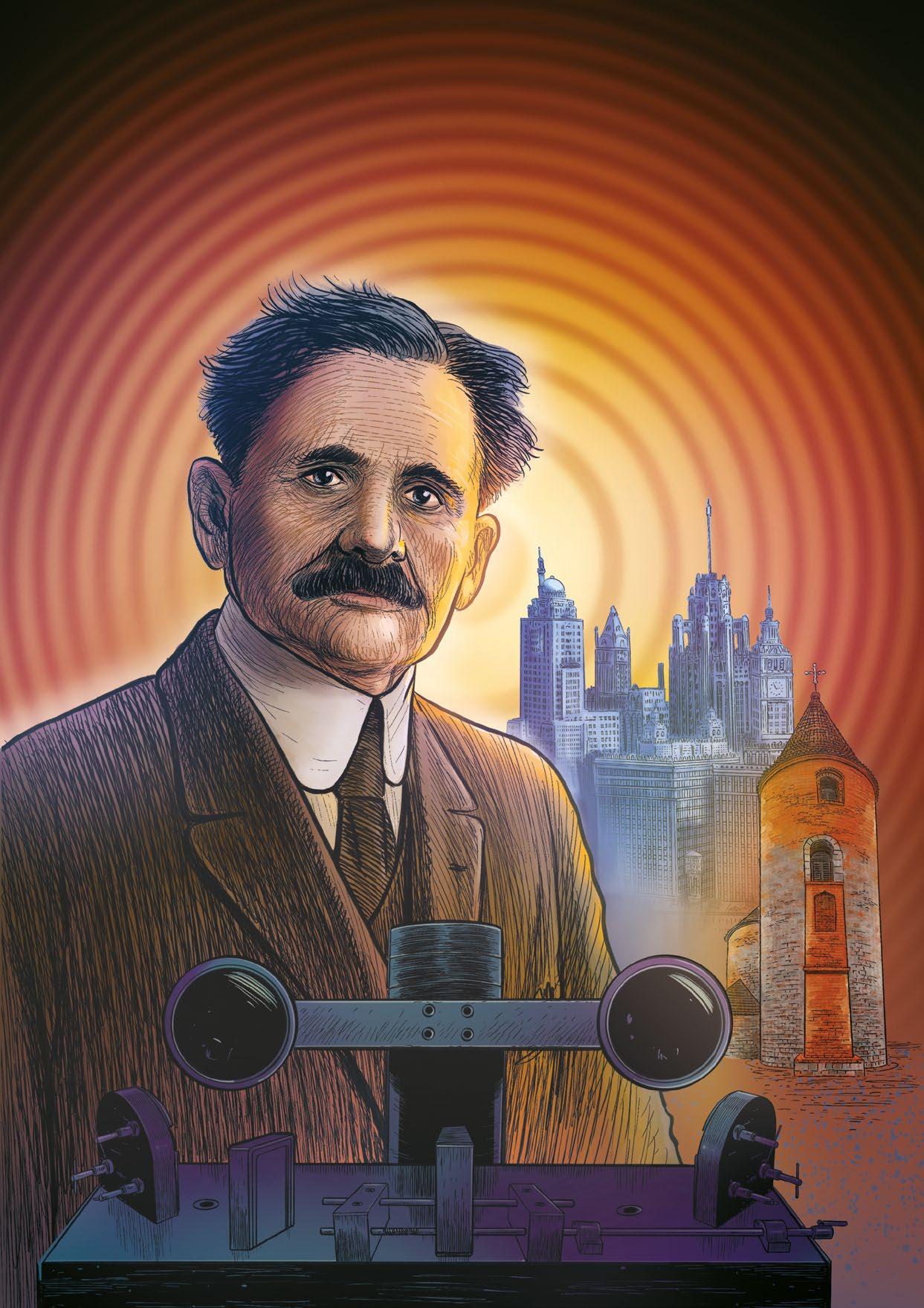
FOLLOWING THE LIGHT
The historical advancement of science distinguishes between two types of researchers revolutionary scientists who become giants, and on their shoulders the other scholars stand, as Newton defined them in 1676 – Nicolaus Copernicus belongs to this group. And there are evolutionary scientists, who are authors of great jumps in progress of science. Albert Abraham Michelson is such a giant!
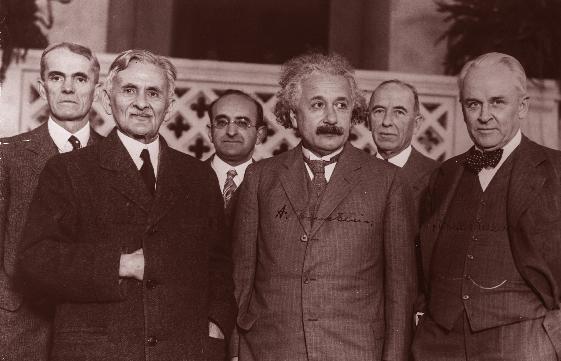
Michelson’s biography has been translated into various languages – here it is offered in a graphic form with dynamic dialogues. This artistic presentation shows the life of a boy born in Strzelno, who thanks to his talent, hard work, determination, and ambition reached the top of the world of science, and now is known as the Master of Light. It is also a story of a midshipman at the U.S. Naval Academy in Annapolis, Maryland, who was distinguished among the other cadets as the Pole fluent in arithmetic.
Albert, the oldest son of Rozalia from Inowrocław and Samuel, a Jewish merchant, was born on December 19, 1852, in Strzelno, a small town in north central Poland. On July 19, 1856, the whole family left Strzelno for America with the hope of finding the socalled better life there. What was going on at that time in the country on the other side of the ocean?
In 1861, the Civil War broke out, and it lasted four years; Abraham Lincoln was the president. On April 15, 1865, the country was shaken by the news of the president's assassination. Albert was so deeply affected by this tragedy that he took the name of Abraham as his middle name. Since then, he was always referred to as Albert Abraham Michelson.
After a difficult beginning, his parents finally started to live the long-desired good life in Virginia City, Nevada. Albert’s mother dreamed of her son becoming a physician, but the family could not afford to pay for their talented son’s studies at the University of California. Thus, Albert’s further education was in question. The choice was made: the U.S. Naval Academy in Annapolis on the East Coast. Albert's path to the Academy presented here in pictures is not fiction, and although it sounds like a movie script, it is based on facts! Ulysses Grant, the president in office at that time, solved the candidate’s life dilemma. On June 28, 1869, Albert Abraham was appointed midshipman to the U.S. Naval Academy in Annapolis.
The collections of the Academy Archive provoke a question: How many gifts and talents can one person accumulate? An outstanding scholar, a Nobel laureate, a founder of modern physics, an author of numerous patents, but also a painter, an illustrator, a composer, a violinist, a talented chess player and a recognized master of billiards. This list proves that Michelson was not a one-dimensional bookwarm. He was also known for his practical jokes, such as dropping a cannonball down the spiral stone staircase in the Academy building.
The diversity of ideas inspired by his passion for precision is reflected in his exotic patents, starting from the optimal way of sewing buttons to a uniform, and finishing with a special construction of railway tracks! The beam of light, however, was the key medium of his scientific activity – light in the interference set, in the experiment to measure its velocity, but also light that adds the depth to his own paintings or brings colors to life of the world of fauna and flora. Who would have suspected that the serious scholar was interested in light reflections on hummingbird feathers or body of a beetle? In fact, his observations are the basis for modern analyses and research conducted by experts in this area of Nature.

"It seems to me that scientific research should be regarded as a painter regards his art, a poet his poems, and a composer his music," said Michelson, following his life motto that "my greatest inspiration is a challenge to attempt the impossible." And when during an interview a journalist said, "It is a shame you had to give up art for the sake of physics," the scientist answered, "I didn’t have to, since art and physics are the same!"
A quotation on the copy of Michelson’s Nobel Prize diploma in Annapolis perhaps sums up his passion for science in the most eloquent way: "I doubt if any scientific man does his work to render distinguished service. I think he does it because it is good fun."
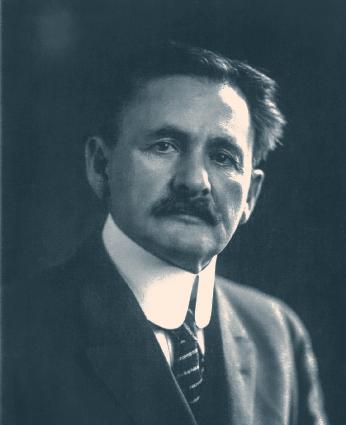
These quotations perfectly describe the personality of the Master of Light.
The highest possible precision of the experiment to measure the velocity of light was almost Michelson’s obsession. To reach it, the original experiment was modified several times over the years. However, the Master of Light did not live to see the end of the project.
Albert Abraham Michelson died on May 9, 1931.
Lidia Smentek Source: Smithsonian Institution



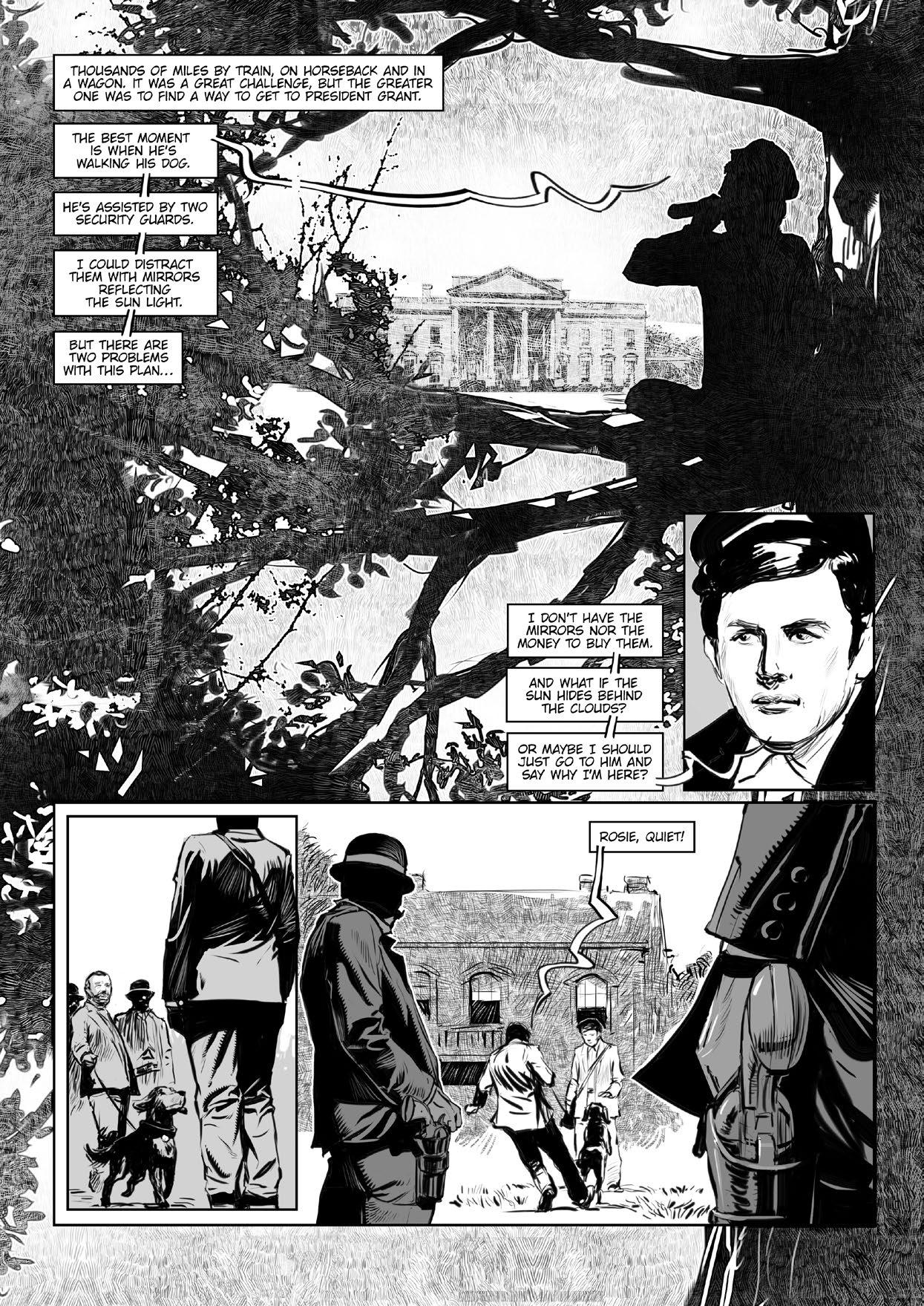


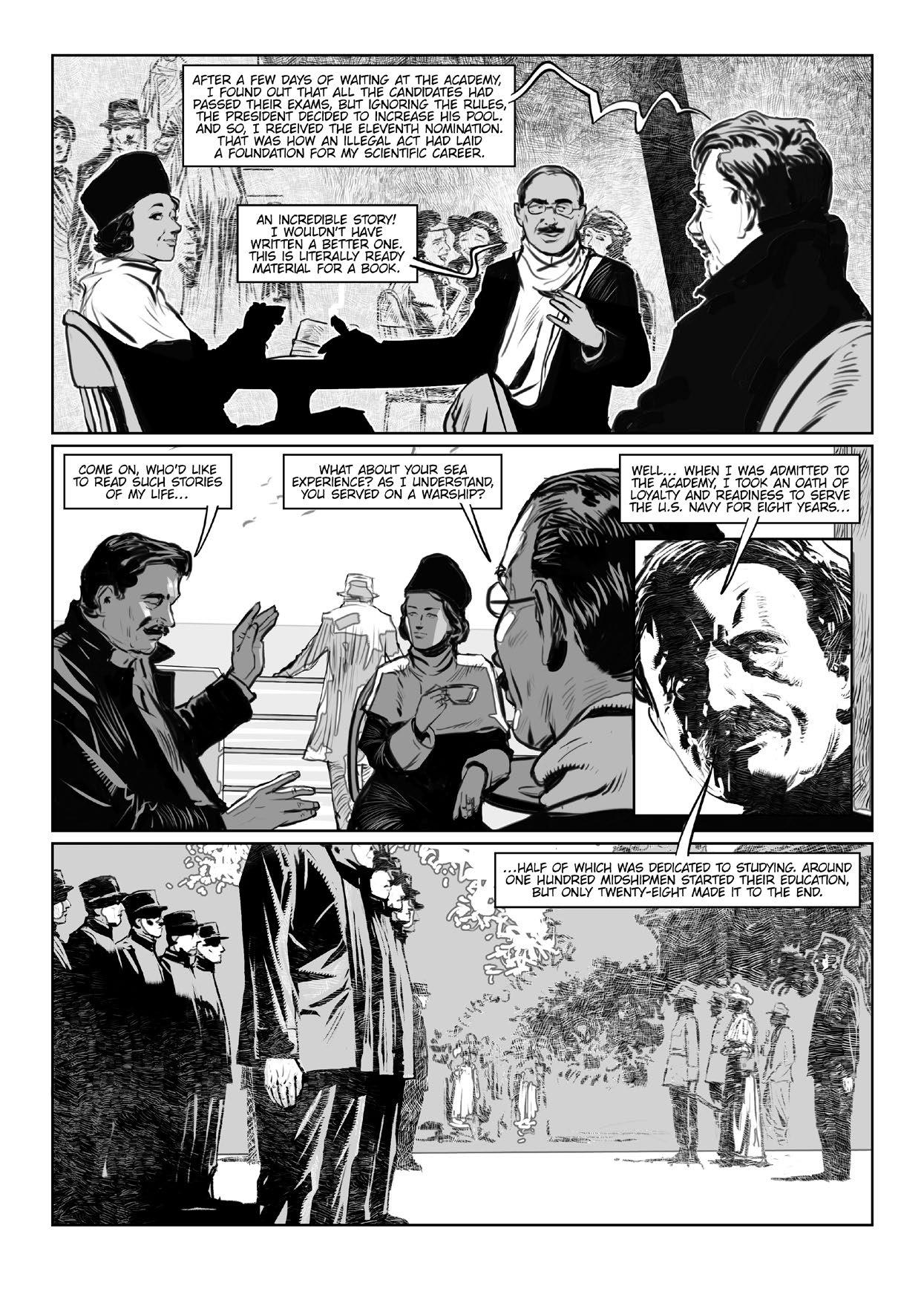

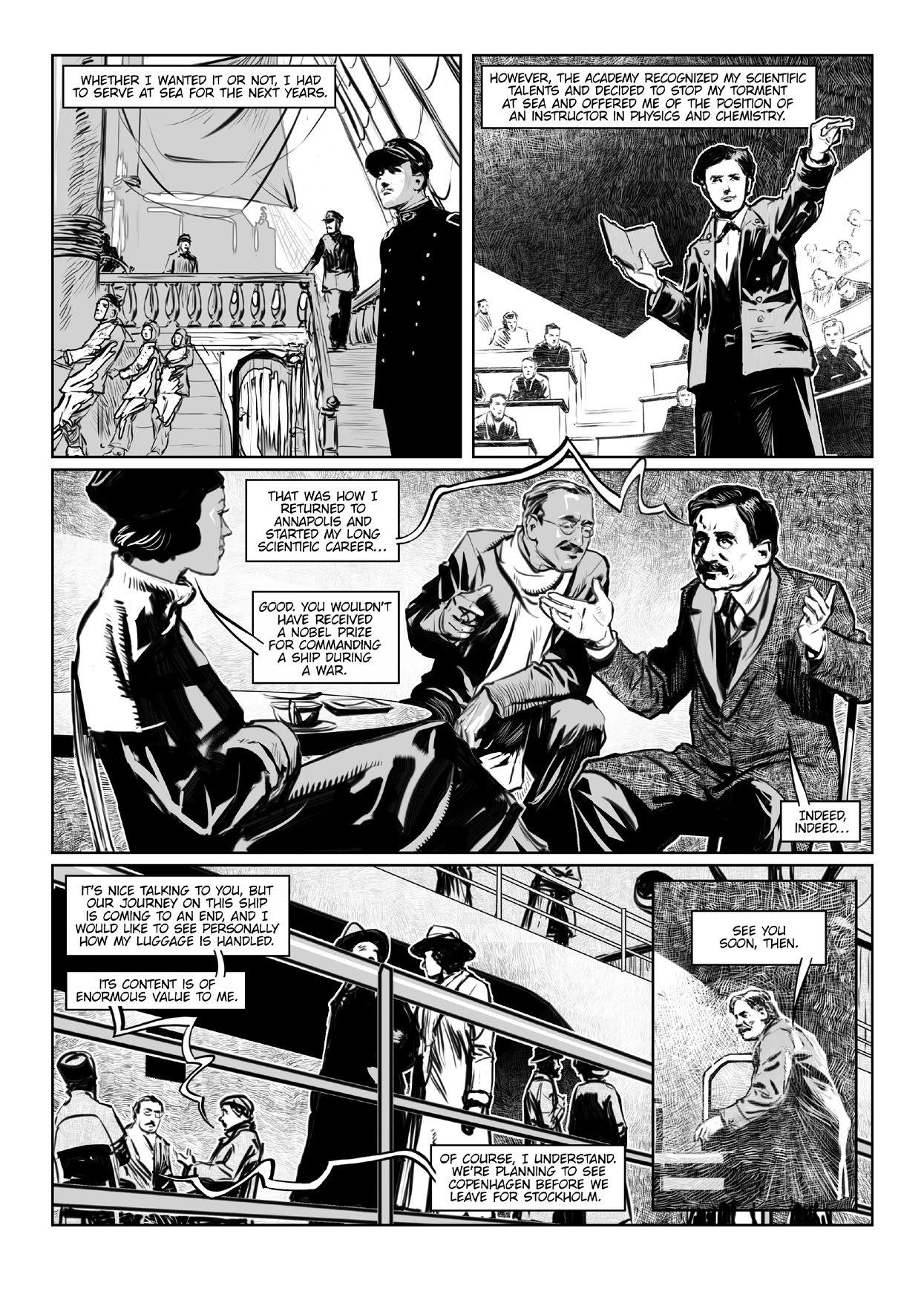
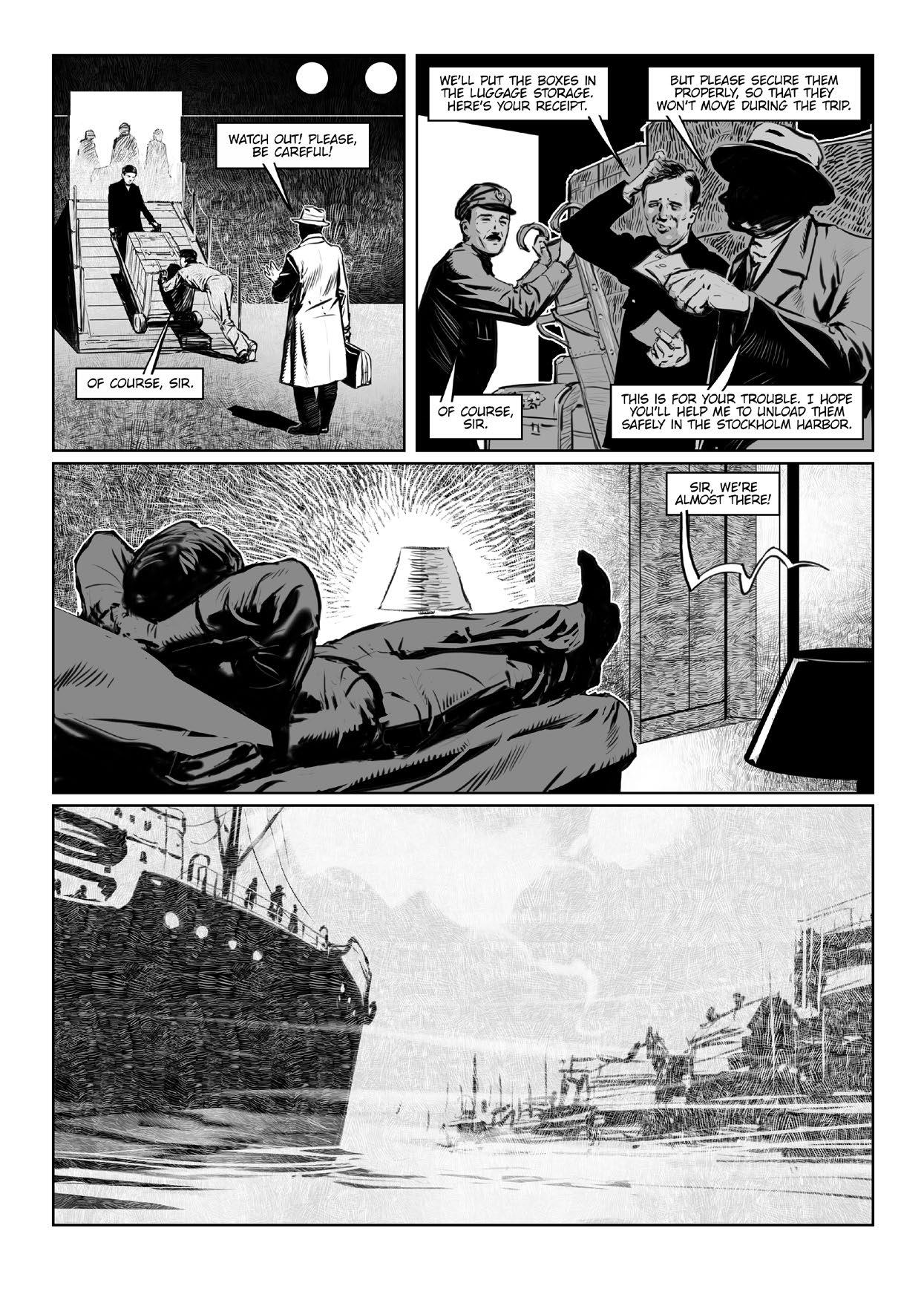


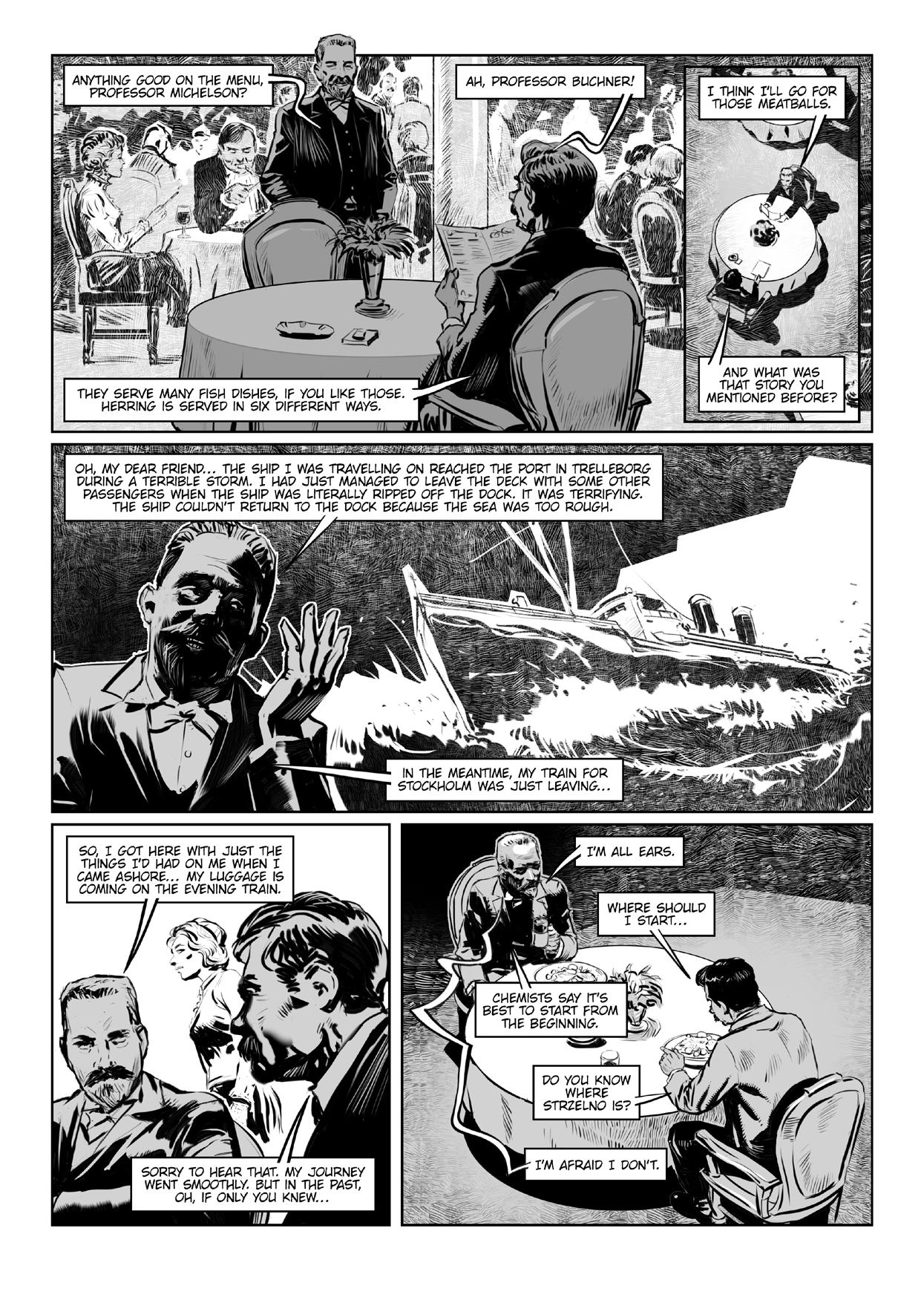


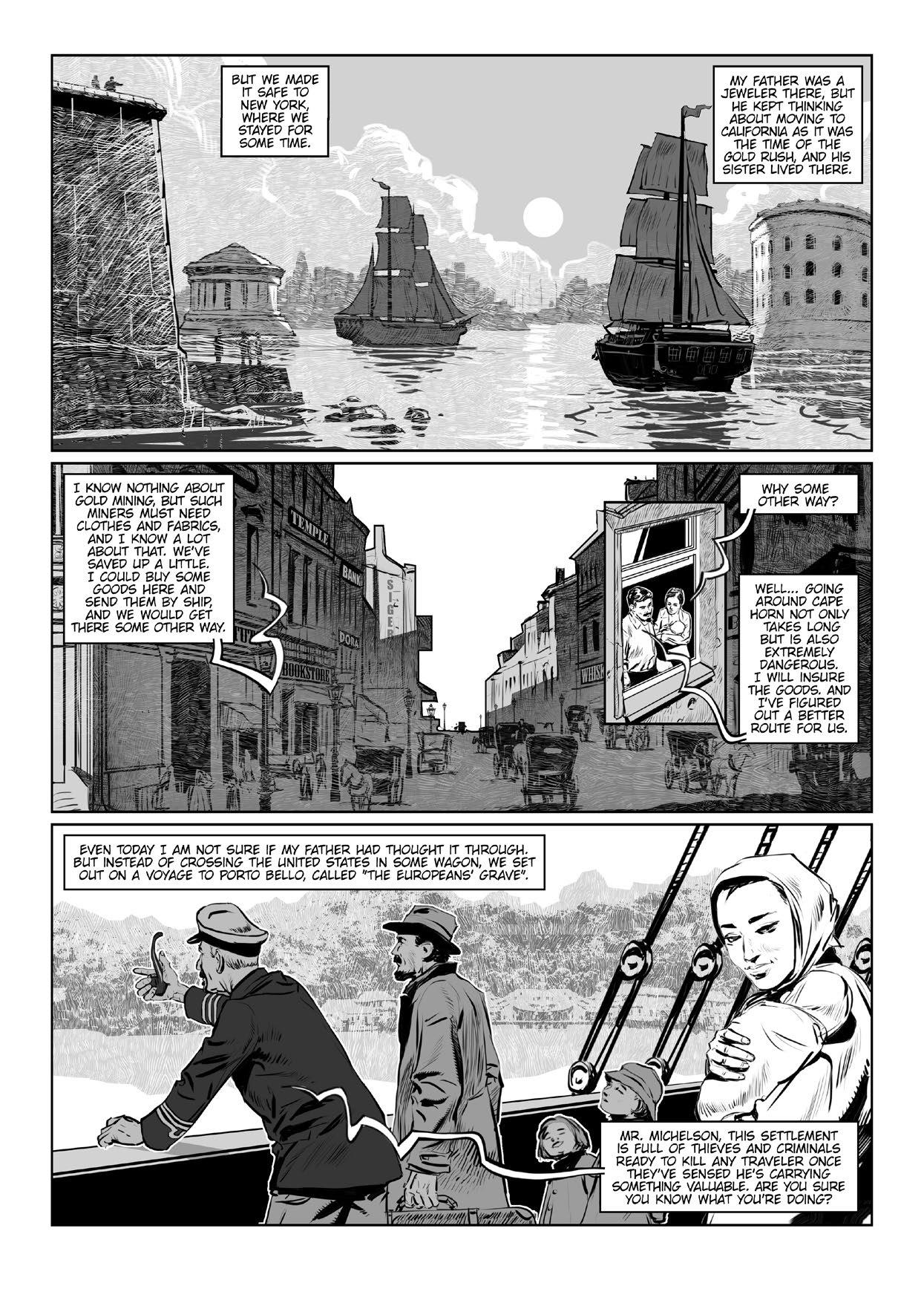

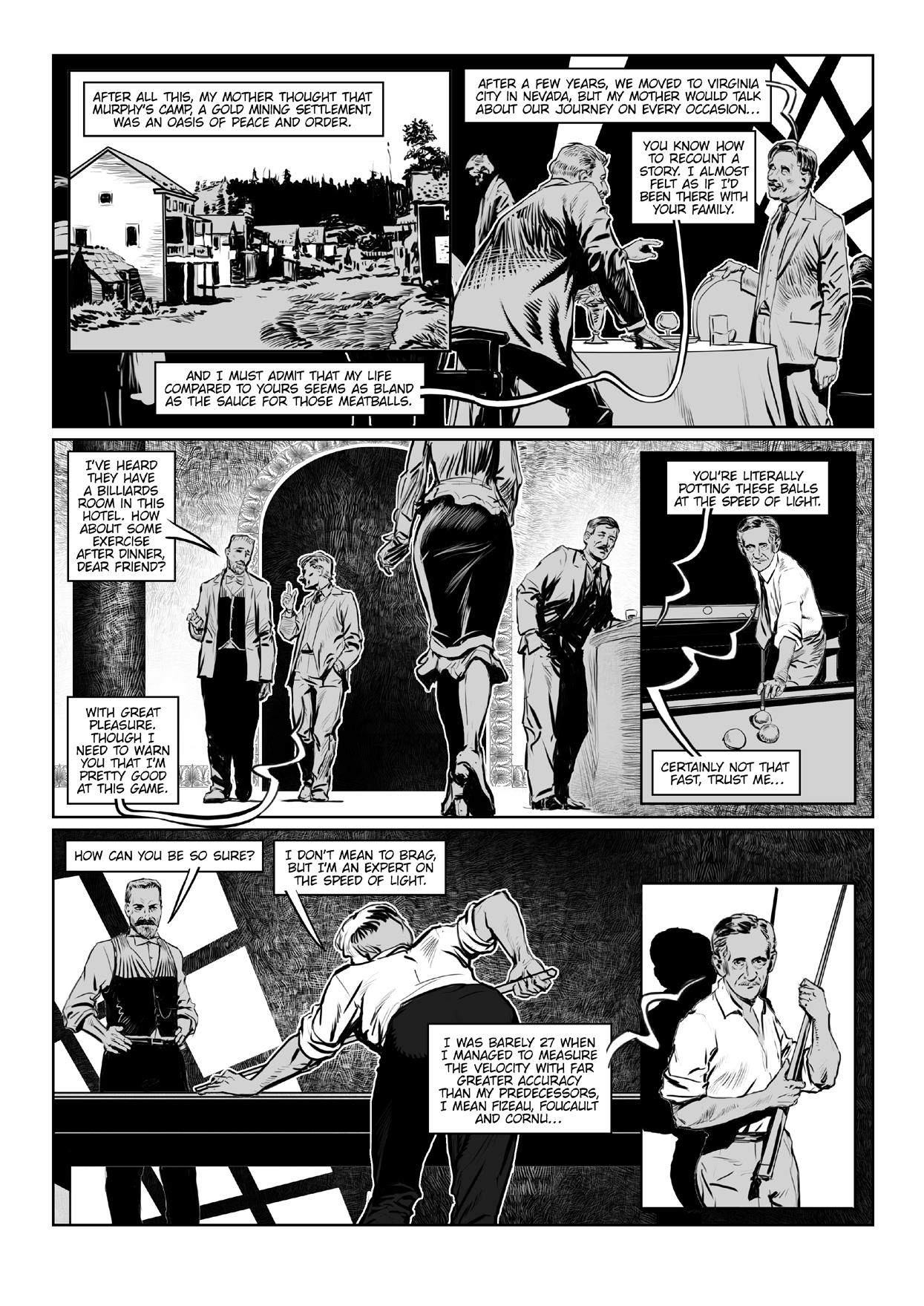
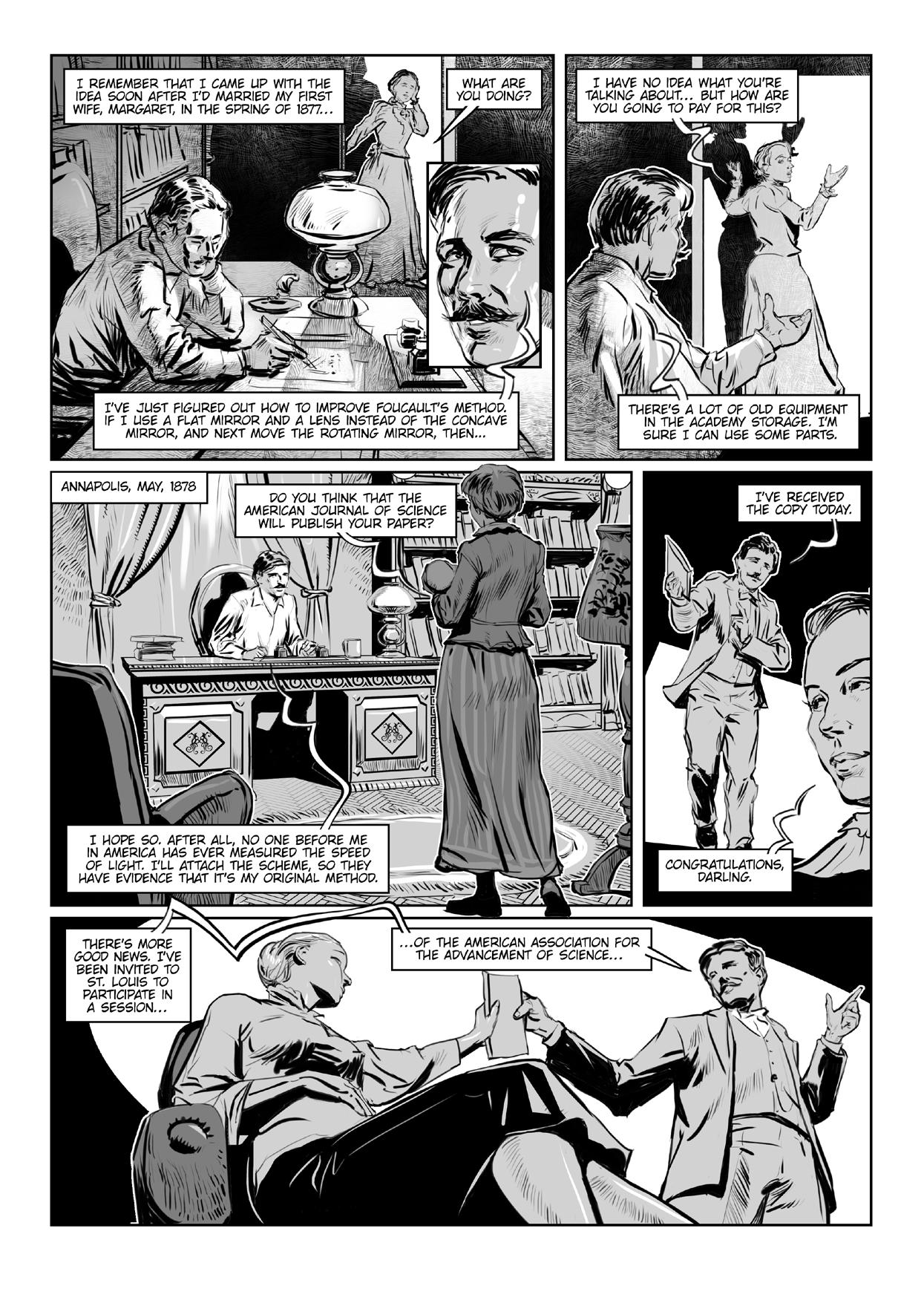

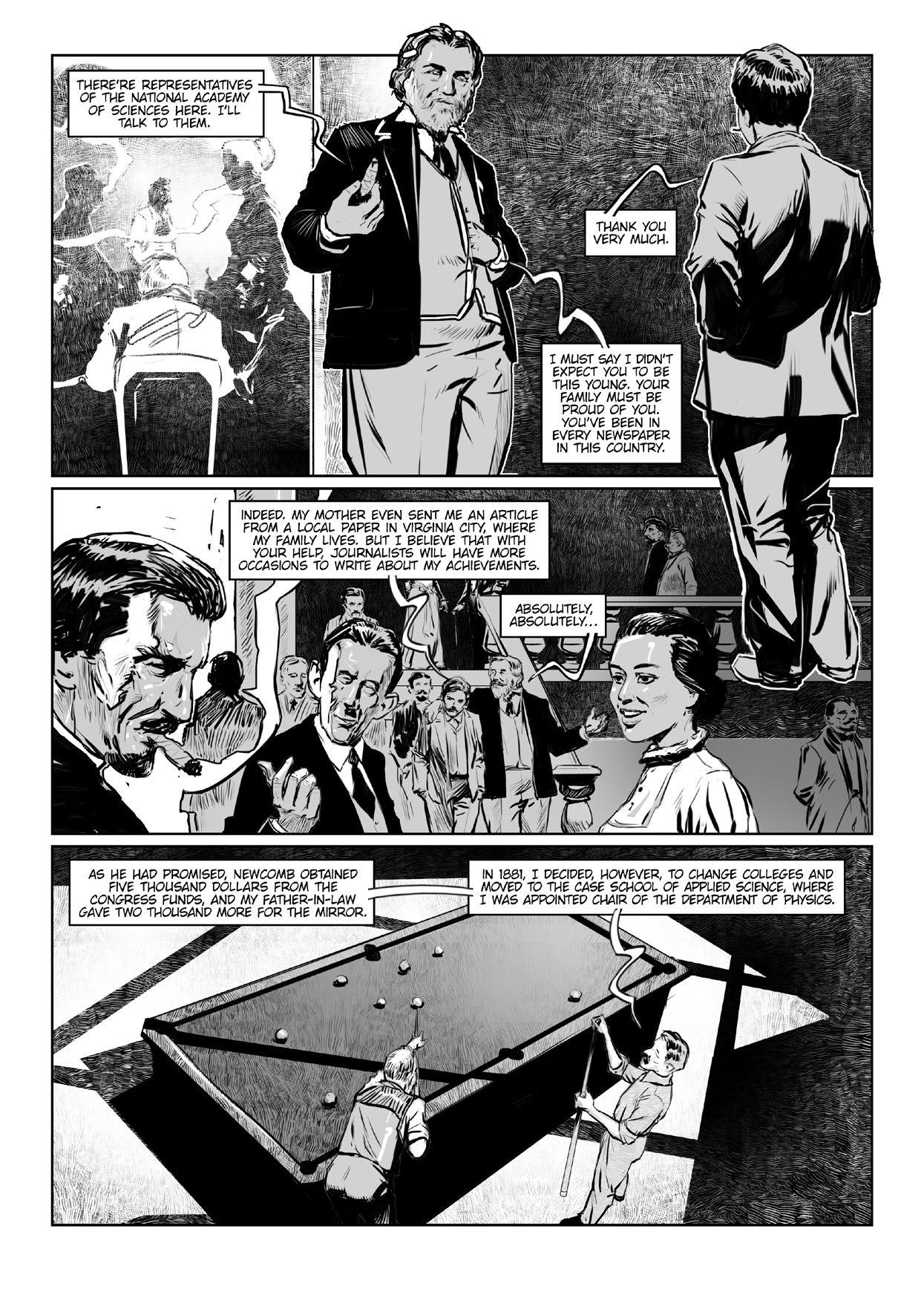
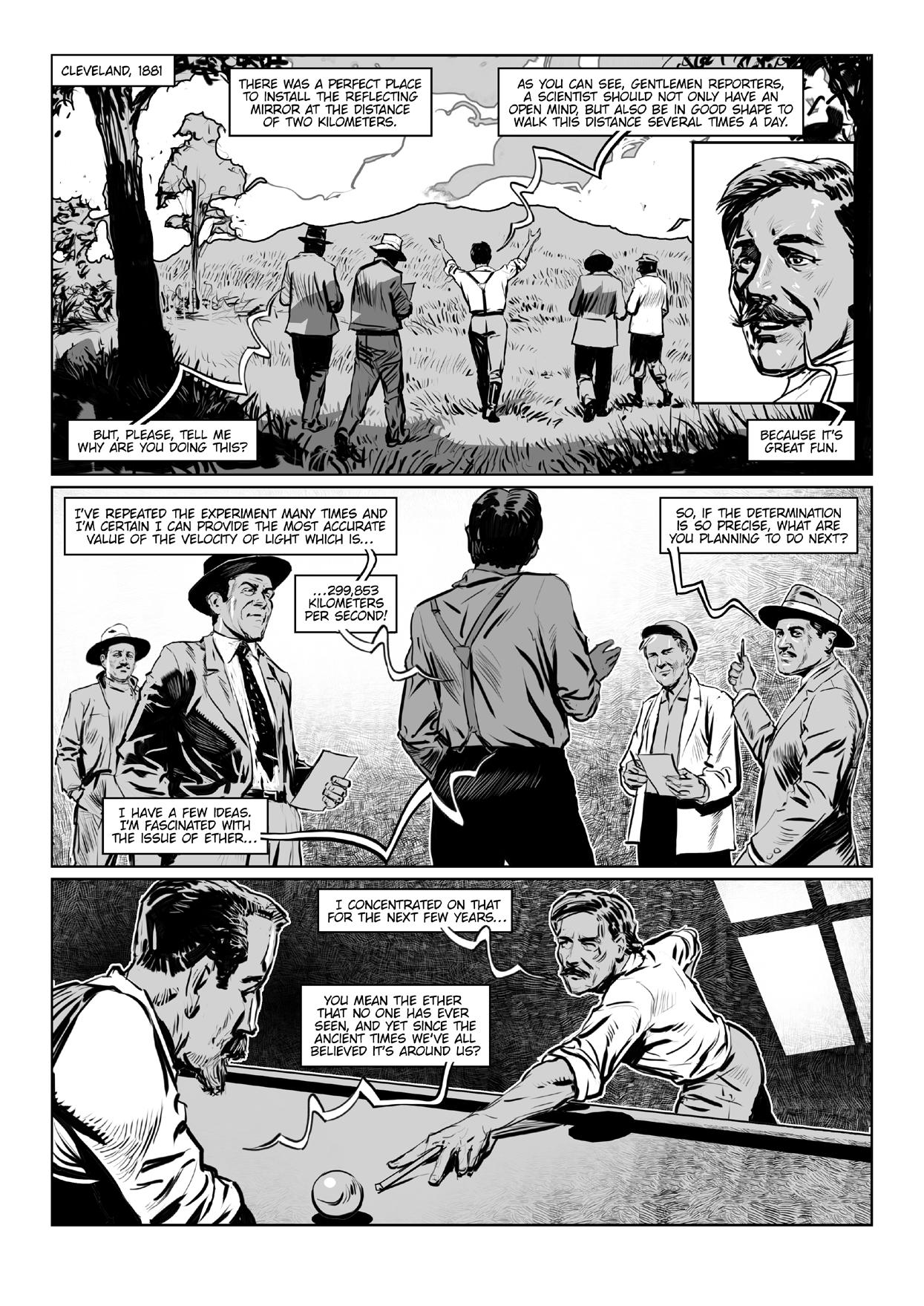
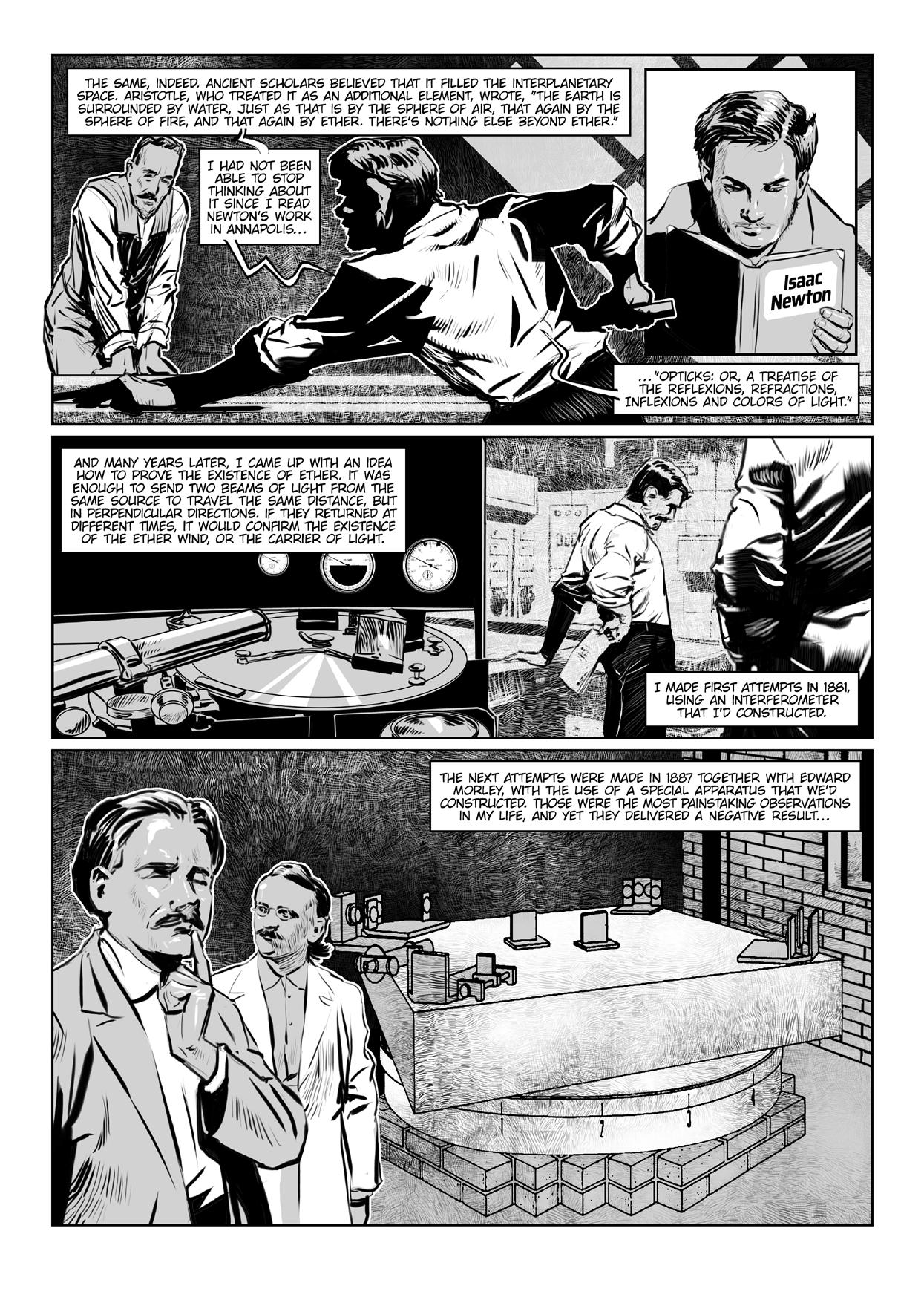

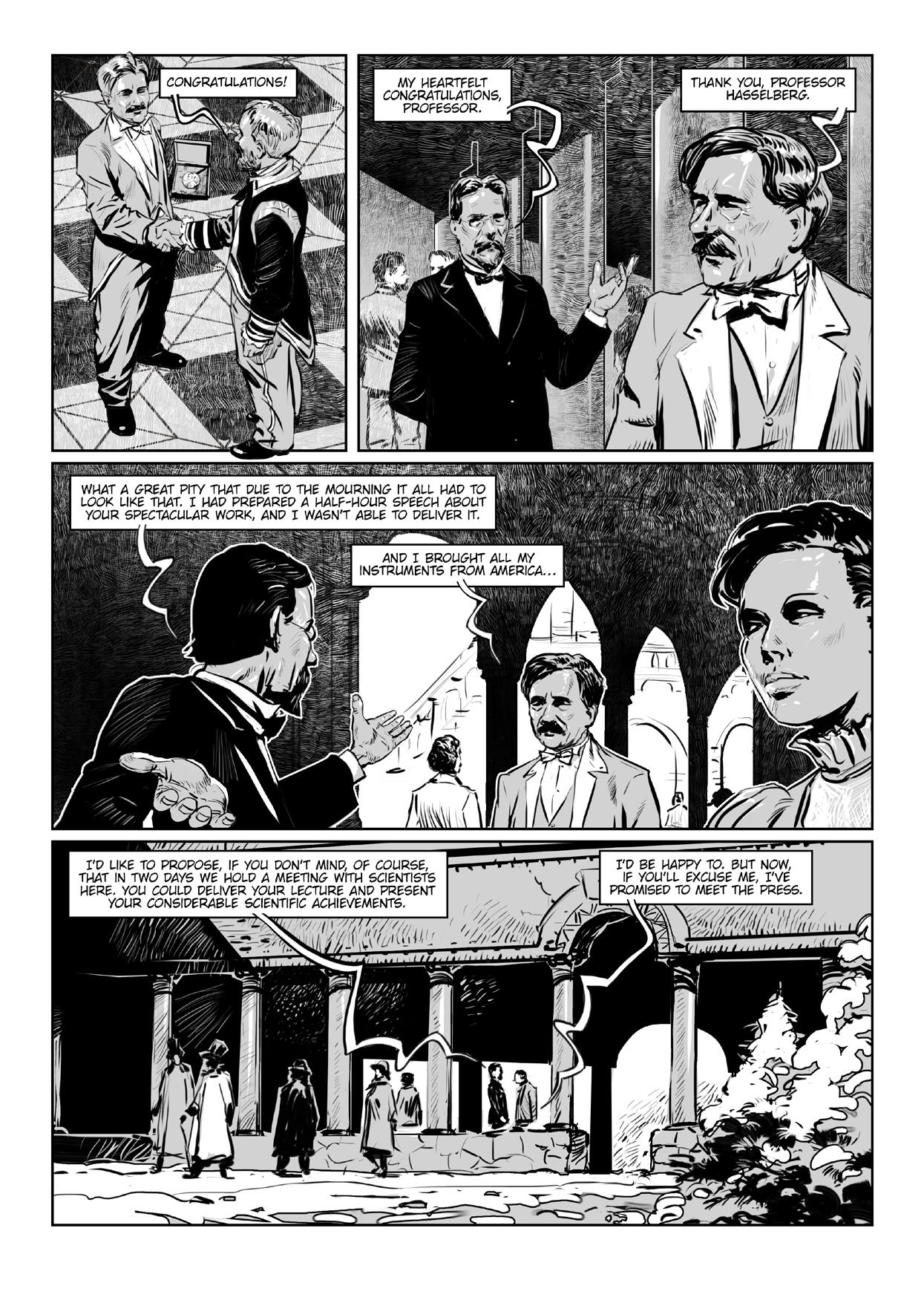
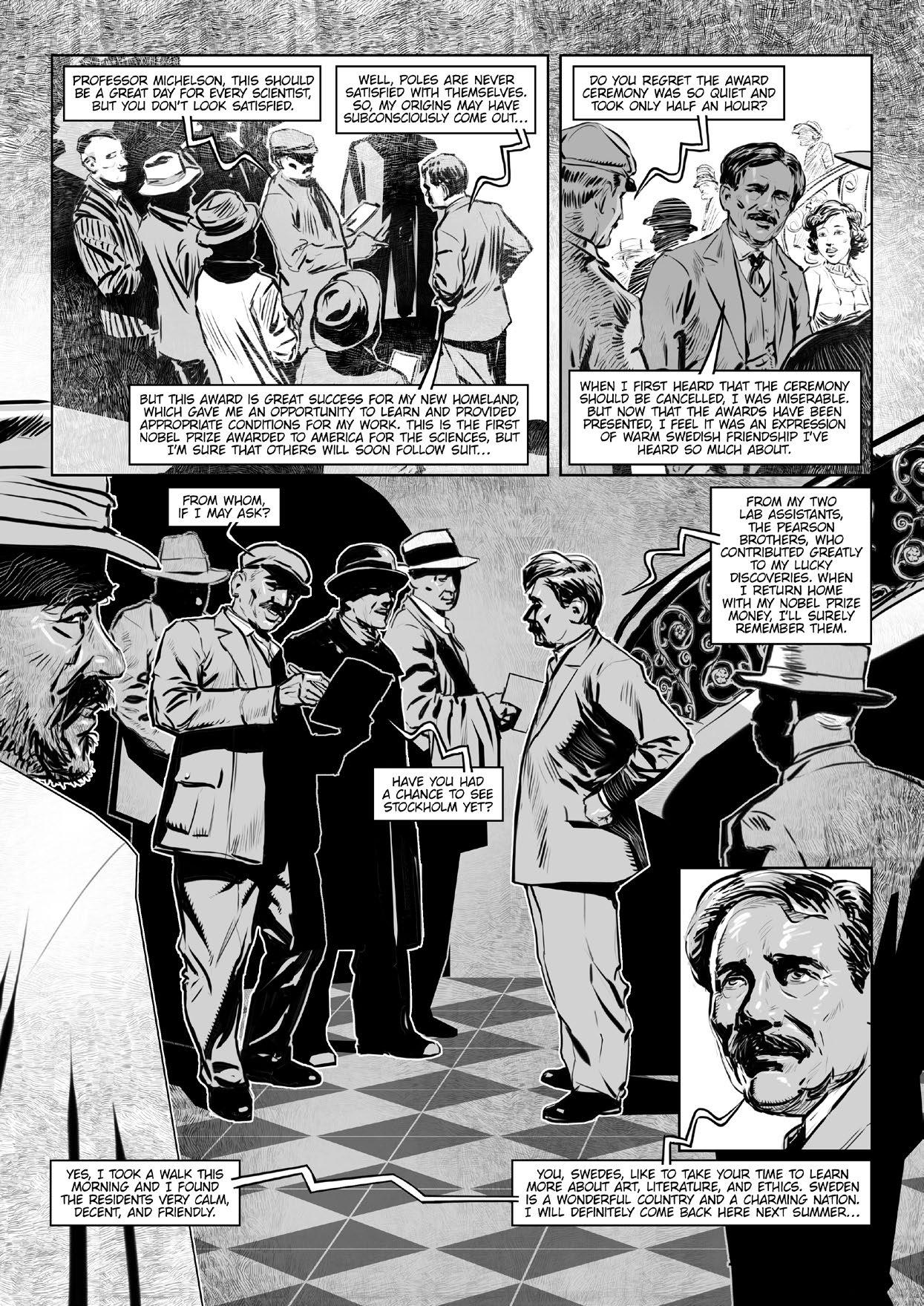

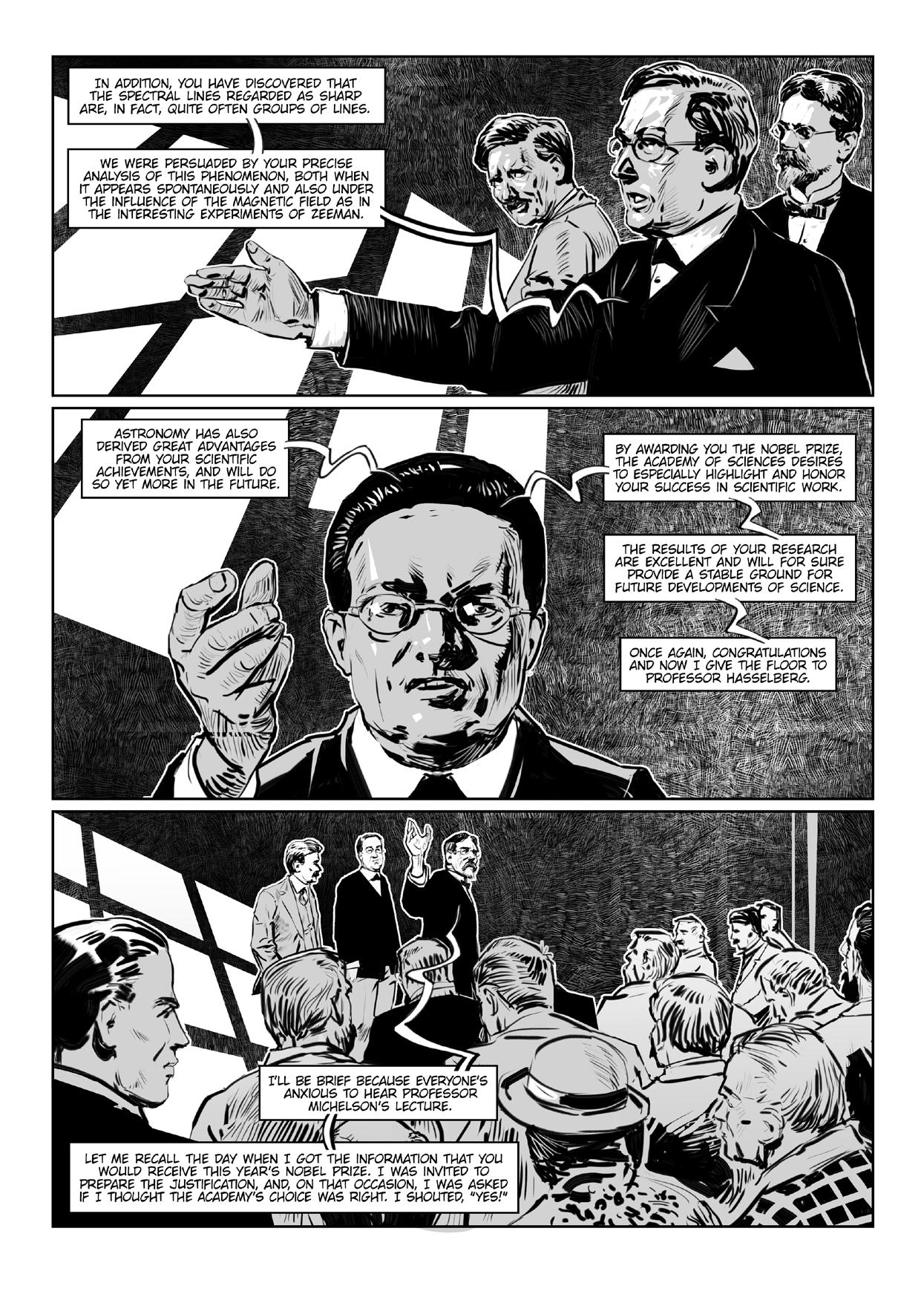
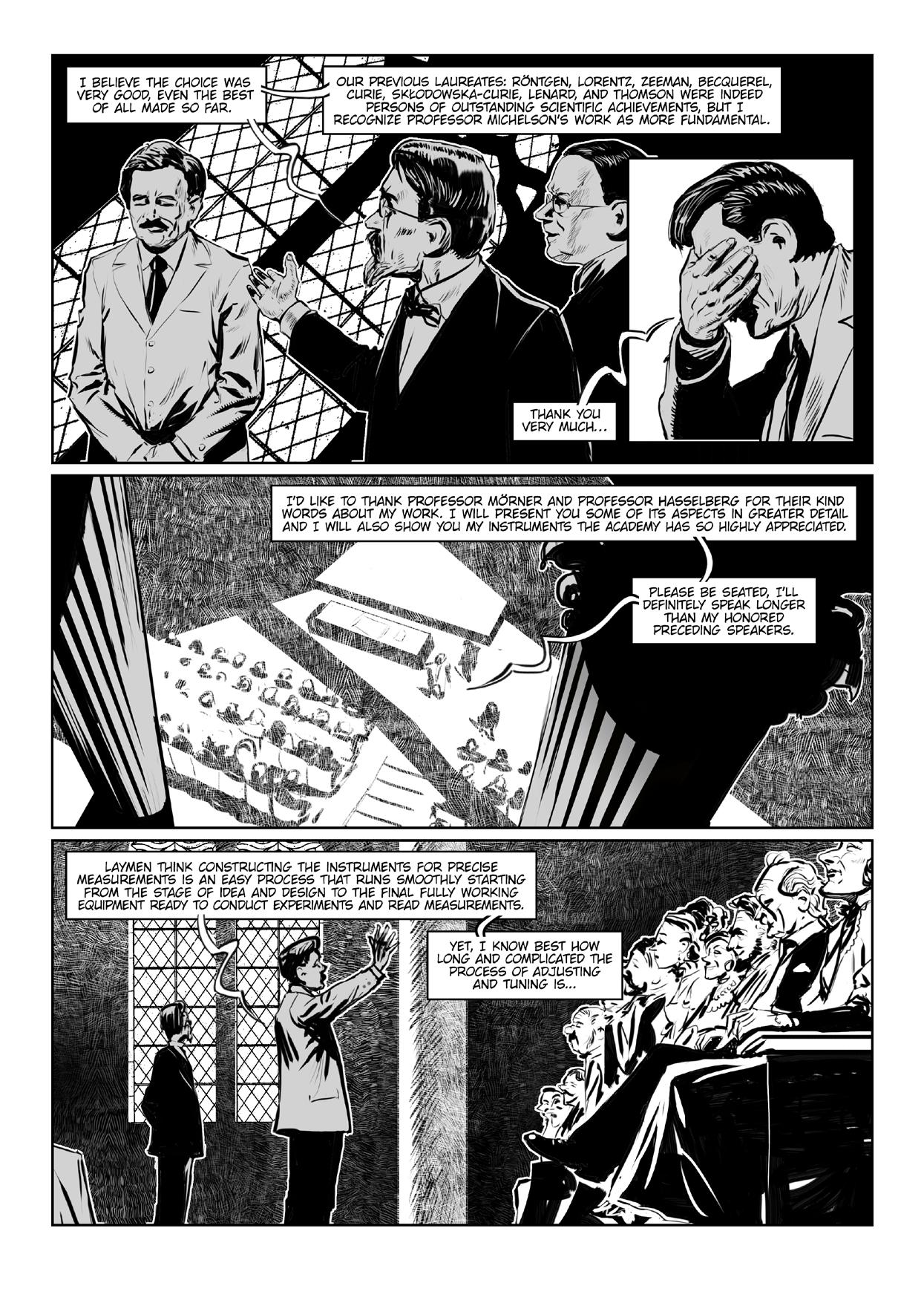
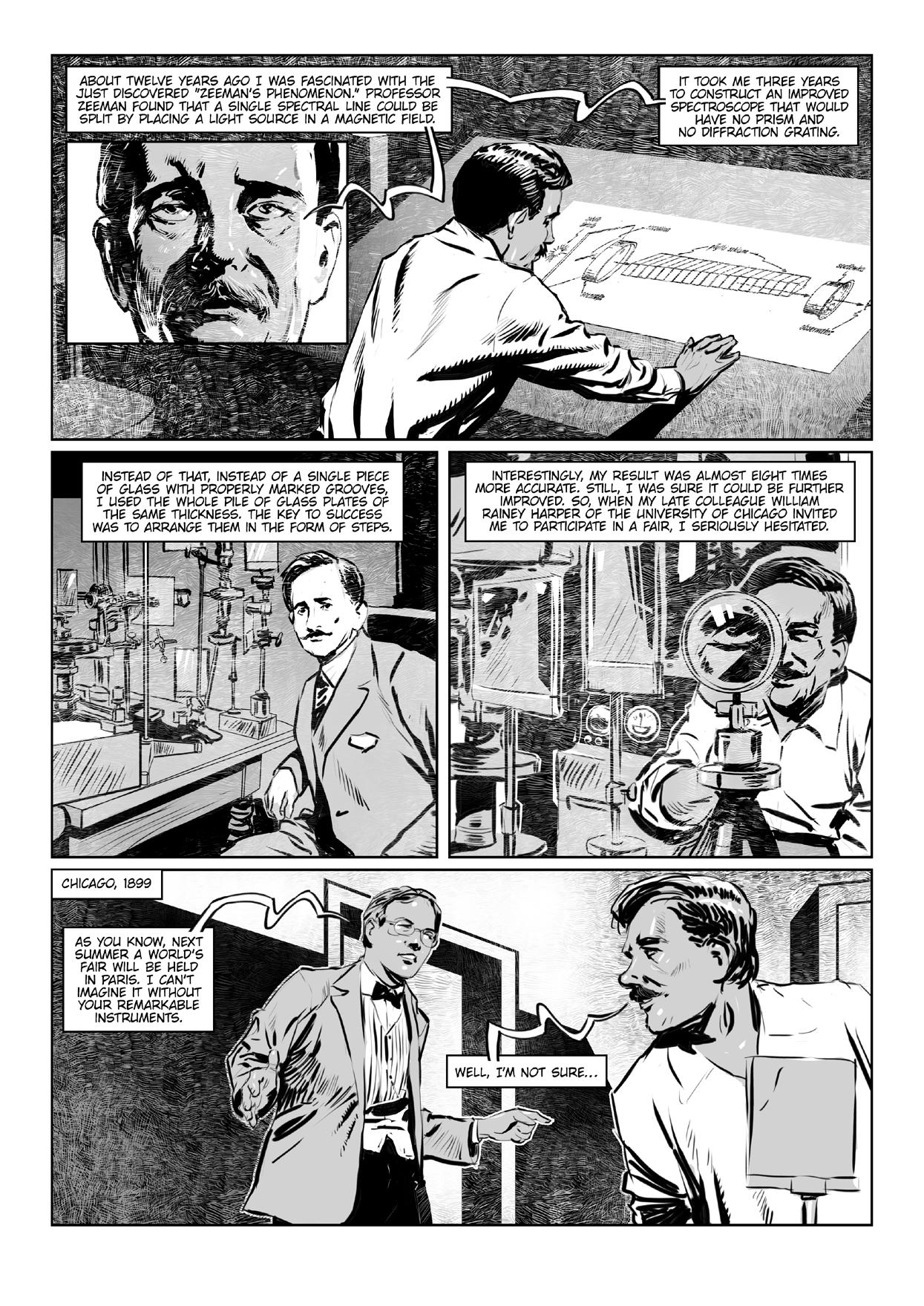


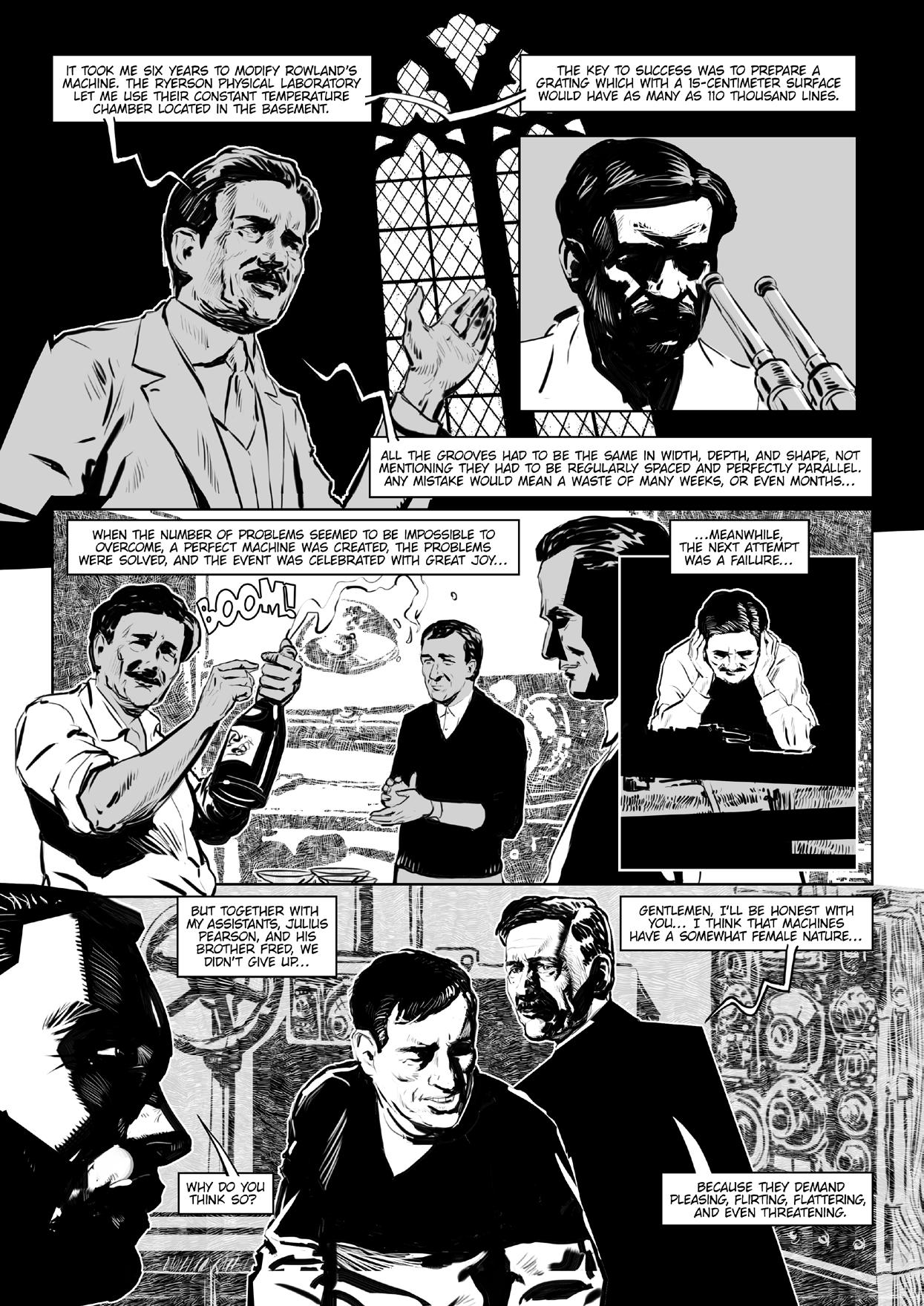
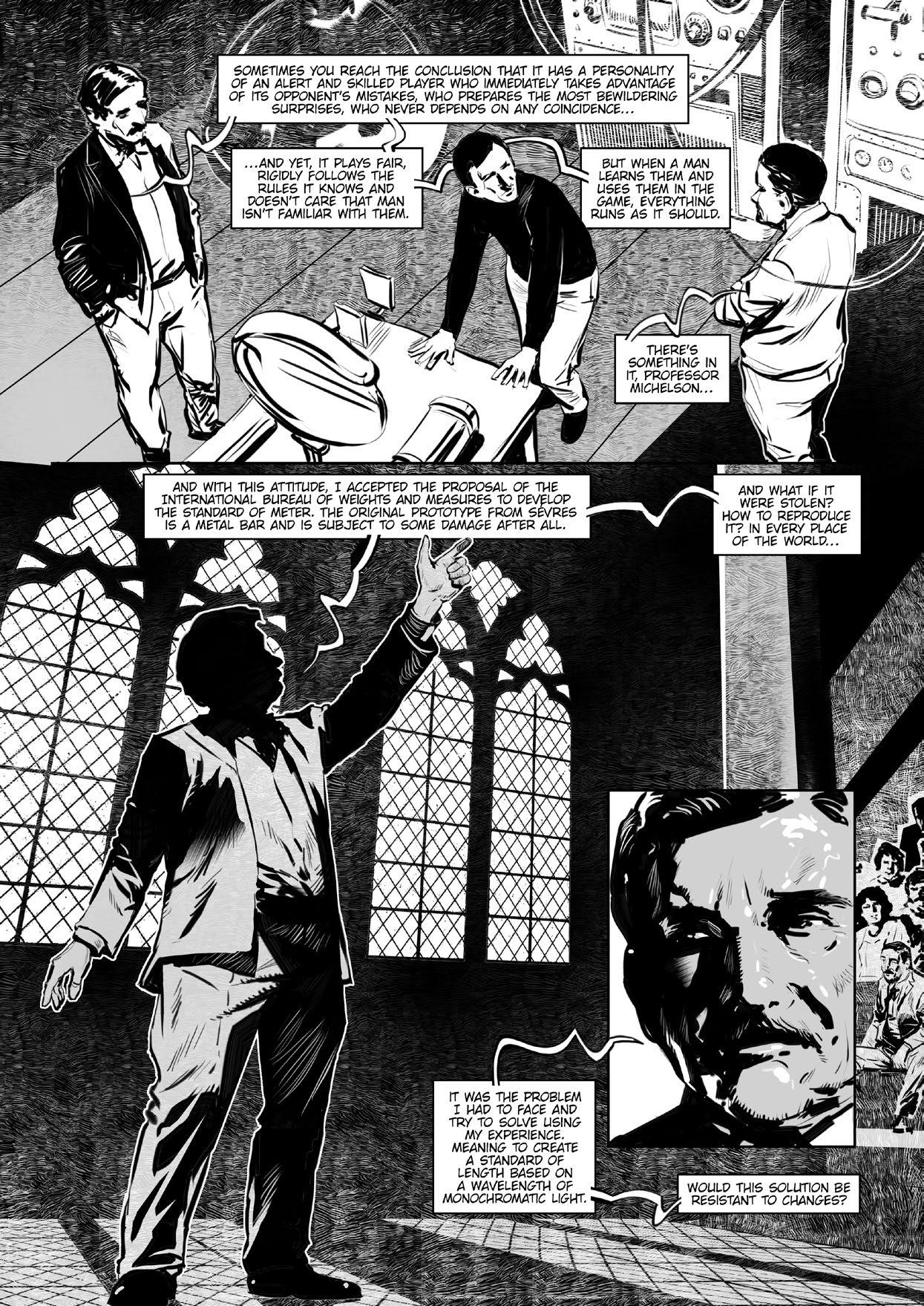


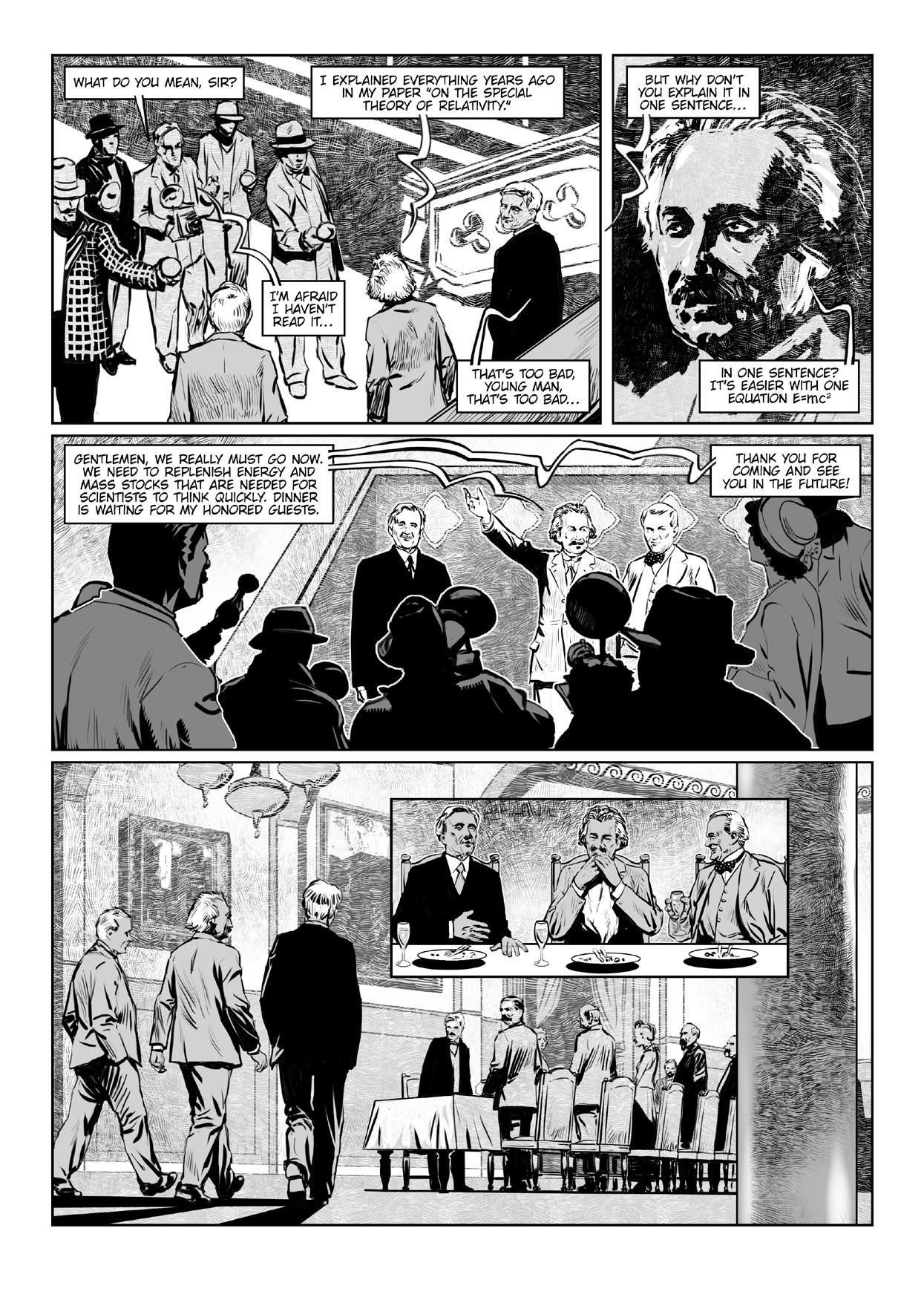
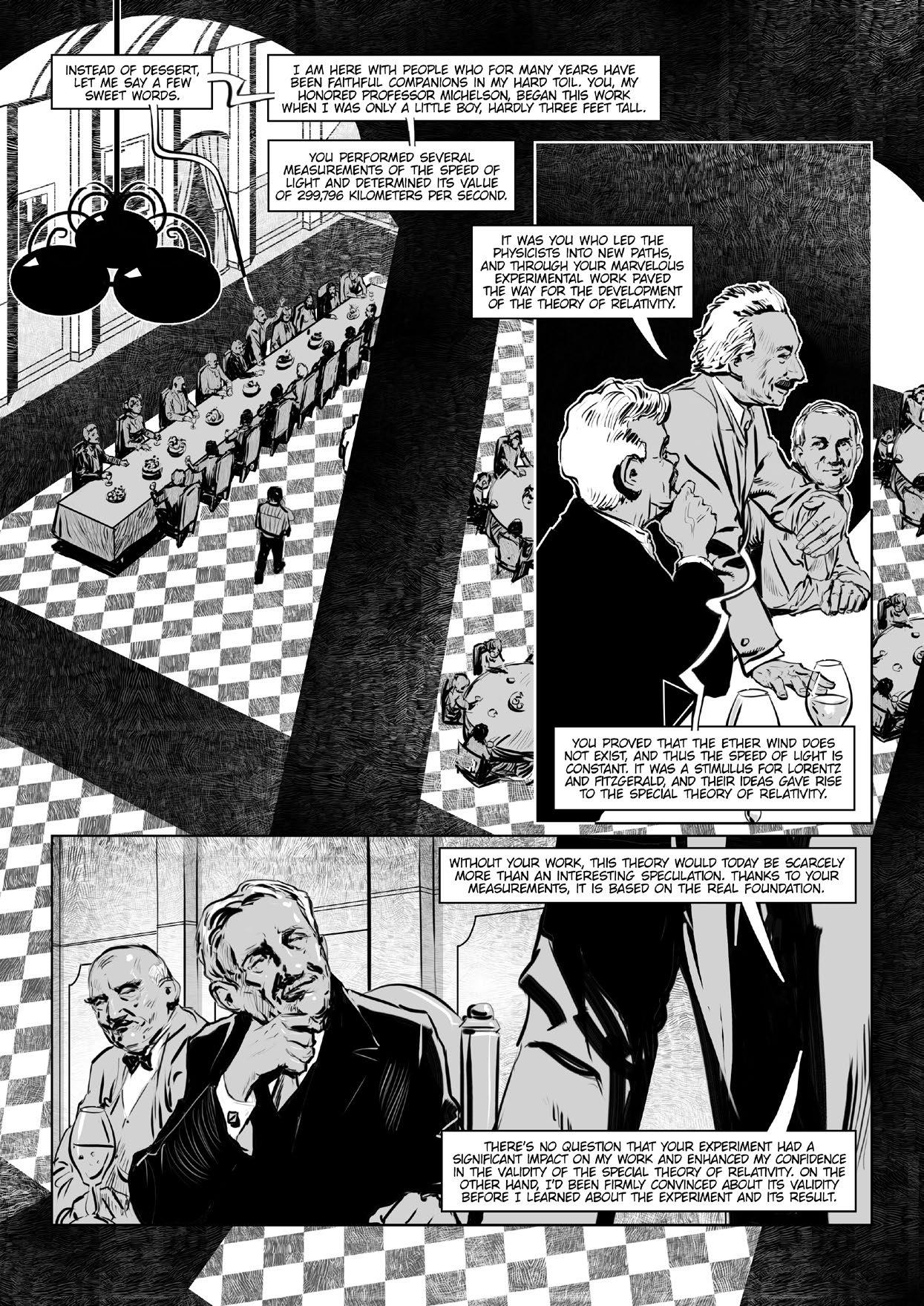
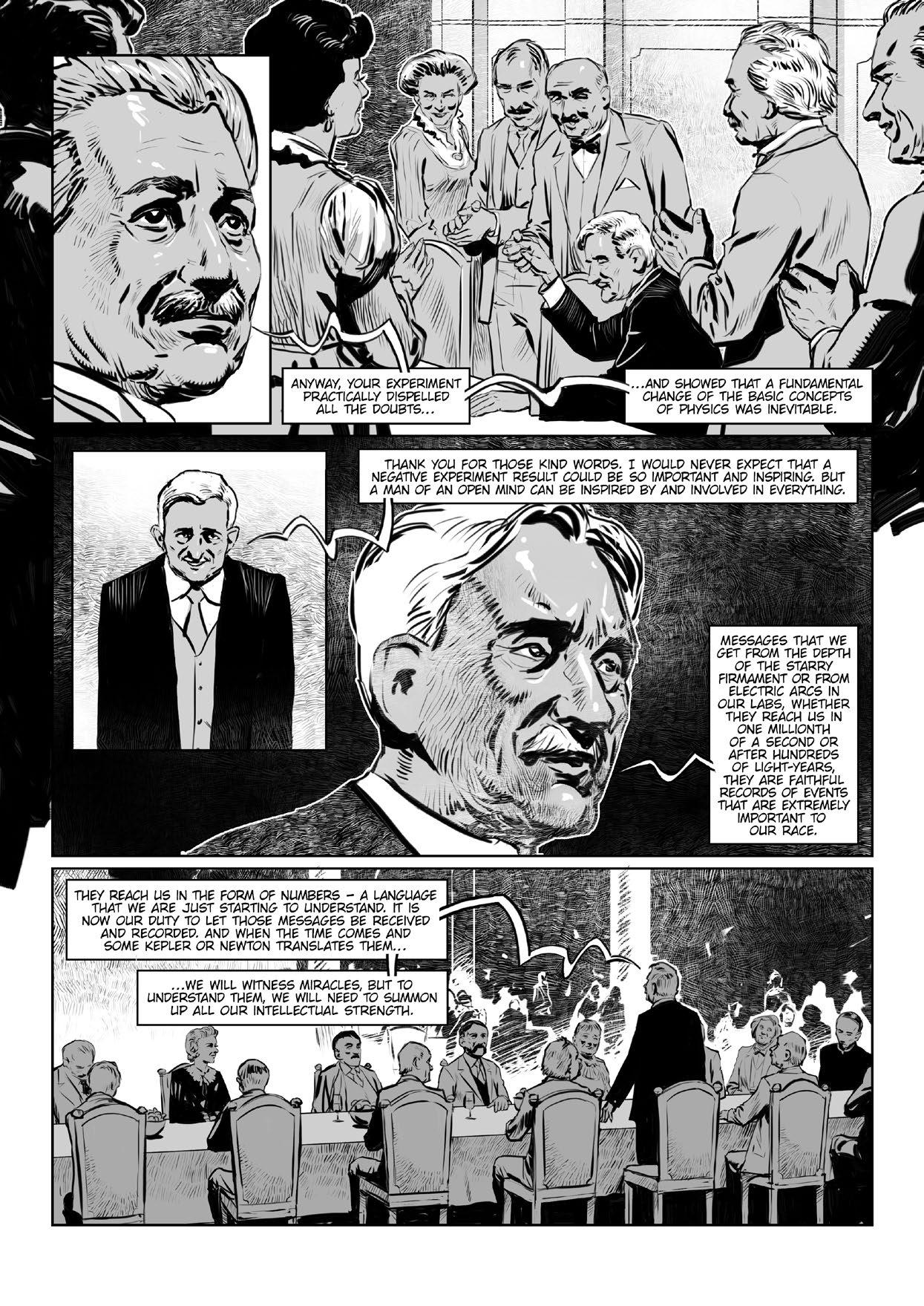
writer
Maciej Jasiński artist Jacek Michalski cover artist
Arkadiusz Klimek consultation Lidia Smentek translation Agnieszka Szewczuk language consultation B. Andes Hess, Jr. ISBN 978-83-965996 1-2 year of publication 2022 print run 1000 copies published by Agencja Reklamowa GALL sc ul. Szosa Chełmińska 50, 87 100 Toruń gall@gall.torun.pl commissioned by The Kujawsko-Pomorskie Region
Contact: Office of the Marshal of the Kujawsko-Pomorskie Region in Toruń Address: Plac Teatralny 2, 87-100 Toruń, tel. +48 56: 6218600, 6218610 e-mail: punkt.informacyjny@kujawsko-pomorskie.pl www.kujawsko-pomorskie.pl facebook.com/WojewodztwoKujawskoPomorskie twitter.com/lubietubyc instagram.com/kujawskopomorskie youtube.com/user/umwkp issuu.com/kujawsko-pomorskie flickr.com/photos/kujawskopomorskie

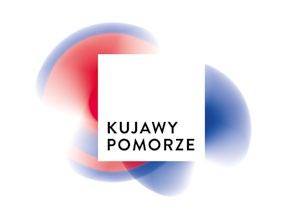
He was the second citizen in the history of the USA awarded a Nobel Prize, but the first one awarded in the sciences. However, he was born to a Jewish merchant as a subject of the Prussian king. Why is Albert Abraham Michelson yet another hero of the comic book series, in which we use a pop culture form to present prominent individuals inextricably connected with our region? What links the graduate of the U.S. Naval Academy with other figures, such as Elżbieta Zawacka, Marian Rejewski or Pola Negri?
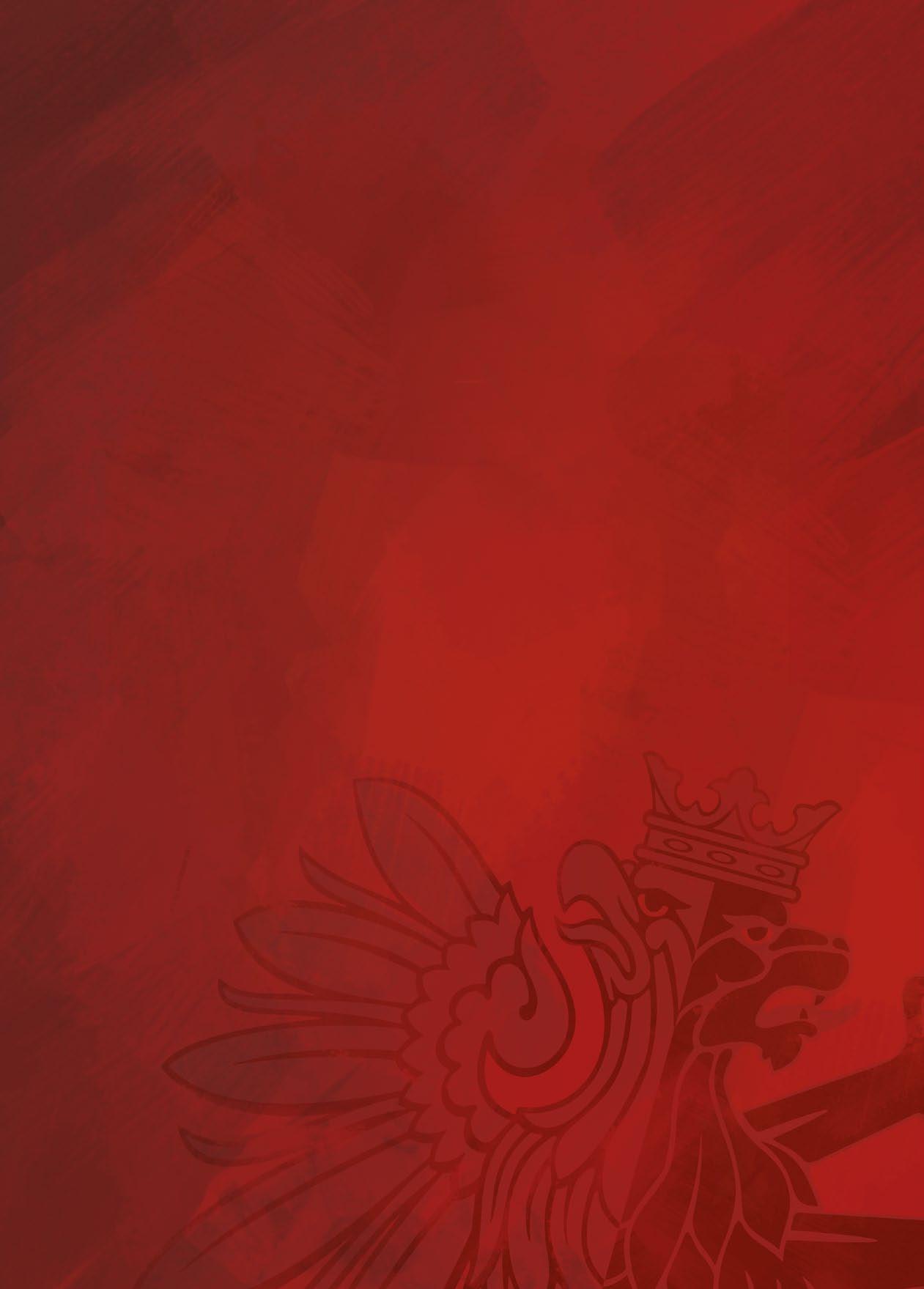

Albert A. Michelson, just like the three persons mentioned, was born on the territory that today is part of the Kujawsko-Pomorskie Region and through his activity (scientific one in this case), just like our other heroes, had a great impact on the world. He never denied his Polish roots and was always very proud to point out where he came from. And he would attribute his scientific achievements, which earned him a Nobel Prize in Physics in 1907, to diligence that he considered to be the Polish nature.
Albert A. Michelson was born on December 19, 1852, in Strzelno. His mother Rozalia, nee Przyłubska, came from Inowrocław. When he was coming into this world, for over half a century Poland had been torn apart by the invaders and did not exist on the map of Europe; therefore he was formally a subject of the Prussian king. Despite these political conditions, during his whole life he indicated Poland as his birthplace in all documents. He was almost a four-year old boy when he left Europe with his parents. The rest of his life he spent in the USA, where he made his remarkable discoveries and designed his inventions. They earned him the most prestigious prize in the world of science awarded by the Royal Swedish Academy of Sciences. We owe to him an interferometer, a device that uses the phenomenon of the superposition of waves to perform very precise measurements. He designed a perfect instrument that scientists have been using to this day, and without which the technological revolution of the 20th century would not have been possible, and neither would be its applications in the 21st century. He already was on one occasion a hero of mass culture when pictured in an episode of a once popular TV series Bonanza, which was set in the Wild West. The episode dedicated to him, entitled Look to the Star s, was about difficult beginnings of young Michelson’s education in America and about his outstanding abilities. Let’s learn the story of the life of this remarkable man of Kujawy.
Piotr Całbecki Marshal of the Kujawsko-Pomorskie Region